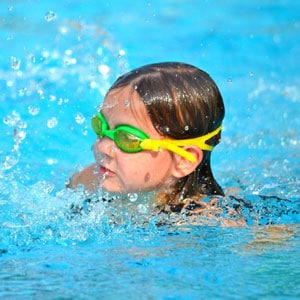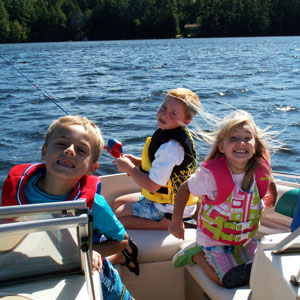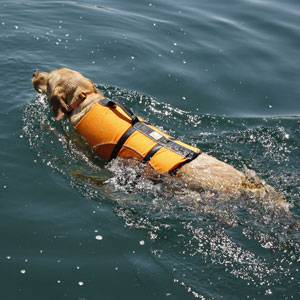 Consider this scenario: You were out enjoying a sunny afternoon swimming at the lake and your child seemed to swallow or inhale a small amount of water. They cough for a minute or so, and then they seem fine.
Consider this scenario: You were out enjoying a sunny afternoon swimming at the lake and your child seemed to swallow or inhale a small amount of water. They cough for a minute or so, and then they seem fine.
You might think nothing of it since kids (and adults) often accidentally swallow some water when swimming, but there are a few important things to keep an eye out for in the minutes or even hours following such an episode.
What we’re referring to are things that can happen shortly after swimming called secondary drowning, or dry drowning. They can happen hours after an initial incident, and when the child is out of the water. These are things that could easily be overlooked, unless a child’s symptoms become severe.
With dry drowning, the child gets water into the mouth or inhales it, but it doesn’t go into the lungs. It stops at the vocal cords, shutting off the child’s airway by creating a spasm effect in the vocal cords.
It’s similar to regular drowning, and it can happen quickly. No matter how many precautions you take to keep your kids safe around water, there is always some risk.
In cases of second hand drowning, water did enter the lungs. The child may have coughed and sputtered, but some water was still able to get into the lungs.
After the water sits in the child’s lungs for a while, it hinders the lung’s ability to oxygenate the child’s blood, and can cause swelling or edema in the lungs. This is when symptoms can show up that range from troubling to serious, or even life threatening.
Symptoms to Look For
Once there’s been a water incident, whether or not they were wearing a life jacket, it’s critical to closely watch your child for a period of time afterwards. Contrary to popular belief, drowning doesn’t usually include screaming, thrashing hands and legs or violent coughing.
It can be a silent drowning incident, causing even the most attentive parents to miss some of the signs. Hours later, there are some symptoms that every parent should watch for including:
- Unusual physical changes – When a child’s lips have a blue tinge or the child’s skin seems unusually pale, watch them closely for a while to see if symptoms subside.
- Becoming very tired – If your child seems tired to the point where it’s out of character, even if they haven’t had much exertion, this can be a sign that the brain is being deprived of crucial oxygen.
- Chest pain, coughing or even throwing up – Look for any breathing that doesn’t seem right, shallow breathing, rapid breathing, gasping or a gap in the child’s ribs when they try to breathe. These are sure symptoms of not getting enough oxygen.
- Strange changes in behavior – When the child becomes abnormally cranky for seemingly no reason or becomes combative, they may not always have the words to express how they’re feeling and they can be in trouble.
Most of these symptoms are due to oxygen deprivation and they can show up anywhere from one to 48 hours after the incident in which the child seemed to swallow or breathe in water. They usually happen sooner if the child was initially immersed in fresh water than if they were immersed in salt water.
The child’s prognosis involving a delayed drowning is usually positive if they were in fresh water, but unfortunately, it’s worse for kids who had this happen in salt water.
Things That Cause Delayed Drowning
In cases of delayed drowning or second hand drowning, it’s usually a case of water having gotten past the vocal cords so quickly that the body didn’t even have a chance of reacting.
Sometimes, this happens when kids are diving off a high diving board before they’re properly trained in diving techniques, or it can also happen when they enter the water very quickly, like when they’re sliding into the water from a water slide. It can even happen playing in the backyard pool.
It’s crucial to carefully watch kids, and to be sure that all activities they do in the water are age appropriate. Little ones will normally want to emulate the behavior of older siblings and friends, and they usually want to be part of the action, but parents must be vigilant and watch what they’re attempting to do in the water.
The most serious incidences of silent drowning or second hand drowning happen in children between ages 6 months and age 5.
Important Advice
The most important advice we can give to any parent who is concerned about the possibility of secondary drowning is to be vigilant and watch kids at all times when they’re in and near the water. Get in the water with them if possible, or at least be very close by so you can act quickly in case of an emergency.


